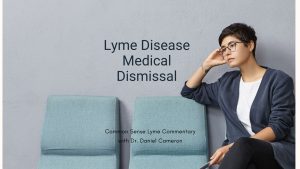
Pleasure Beach in Bridgeport, Connecticut, is closed for the entire summer of 2025—not for a storm, but for ticks.
Multiple species were discovered, including the Asian longhorned tick, an emerging invasive threat. Officials are applying treatments, but the closure highlights a bigger issue: ticks at the beach are now part of the Lyme disease conversation.
If you’re wondering whether this was a fluke—it wasn’t.
Ticks at the Beach: What We’re Seeing
Ticks can survive in beach environments, especially when there’s vegetation, dune grass, leaf litter, or moisture. In my practice, I remind patients that you don’t need to be deep in the woods to be exposed.
Migrating birds, including gulls and shorebirds, can carry ticks to the coast.
A 2020 Journal of Medical Entomology study found ticks on 74% of beach trails in coastal parks.
This isn’t a hypothetical risk. It’s a real and growing public health concern.
Tick Risk Is High Across the Northeast
The Fordham Tick Risk Index rates current conditions as 9 out of 10 in Connecticut, New York, and New Jersey.
Tick populations are higher than last year, with both nymphs and adults active in warm, wet conditions. Among the species detected:
-
Blacklegged ticks (Lyme, Babesia, Anaplasma, Powassan)
-
Lone Star ticks (Ehrlichiosis, Alpha-gal, STARI)
-
American dog ticks (Rocky Mountain spotted fever)
-
Asian longhorned ticks (Ehrlichiosis, Theileria, under study)
These ticks are no longer confined to wooded areas—they’re showing up in suburban yards, parks, and now, coastal ecosystems.
The Asian Longhorned Tick: A Growing Concern
First identified in the U.S. in 2017 (New Jersey), the Asian longhorned tick has now spread to at least 19 states.
It reproduces without mating—cloning itself through parthenogenesis—allowing it to rapidly expand its population.
It’s known to transmit:
• Ehrlichiosis
• Anaplasmosis
• Theileria (in cattle)
Its full impact on human disease is still under investigation, but its presence in new environments raises concern for both physicians and public health officials.
I’ve started considering this tick when patients present with unexplained fever, fatigue, or abnormal lab markers—especially in areas where it’s been detected.
Children and Pets Are at Higher Risk
I remind families: beach days still require tick precautions, especially for children and pets.
-
Kids tend to wear less clothing, play on the ground, and often skip tick checks.
-
Dogs frequently bring ticks into the home. I recommend vet-approved preventatives and regular post-walk checks—especially around ears, toes, and belly.
Prevention Now Applies to the Ticks at the Beach
According to the CDC and Massachusetts Department of Public Health, here’s how to protect yourself:
Before You Go:
-
Apply EPA-approved repellents (DEET, picaridin, or oil of lemon eucalyptus)
-
Treat shoes and gear with permethrin
-
Wear long sleeves, light clothing, and tuck pants into socks
-
Stick to the center of trails and dunes
After You Return:
• Shower within 2 hours
• Do a full-body tick check, including hairline, waistband, behind ears
• Tumble clothes in a hot dryer for 10+ minutes
• Check pets thoroughly
If You Find a Tick:
• Remove with fine-tipped tweezers
• Clean the area
• Watch for symptoms: bull’s-eye rash, fever, joint pain, chills
• Call your doctor if symptoms arise
Clinical Takeaway
The closure of Pleasure Beach is a reminder that tick exposure is no longer limited to the woods. We’re seeing Lyme disease—and other tick-borne infections—emerge in new environments, including places we once assumed were safe.
Lyme prevention now includes the beach. And that means:
-
Don’t skip repellent just because you’re heading to the shore.
-
Make tick checks a habit after every outdoor activity.
-
Educate patients, families, and communities about changing risk patterns.



I have had Lyme and most Coinfections. I was bit in 1979at 19 yrs. in the Coctin Mountains, at a Resident camp. as a counselor. I was taken to a small Hospital in Hagerstown, MD. I had a 105 degree fever they could not break for a week. In the mean time my foot was sore they found something had bit me in a vein. After 2 weeks sent home to Baltimore. Life got slowly worse. Told was crazy and that was it. A friend said look into Lyme, 1990 Got a apt. wit Dr. Burrascano. I would have been long, but are still on antibiotics I am wheelchair bound. Still has not changed a lot.
I have patients facing the same challenges since opening practice in 1987. I am glad you were able to include Dr. Burrascano in your evaluation.